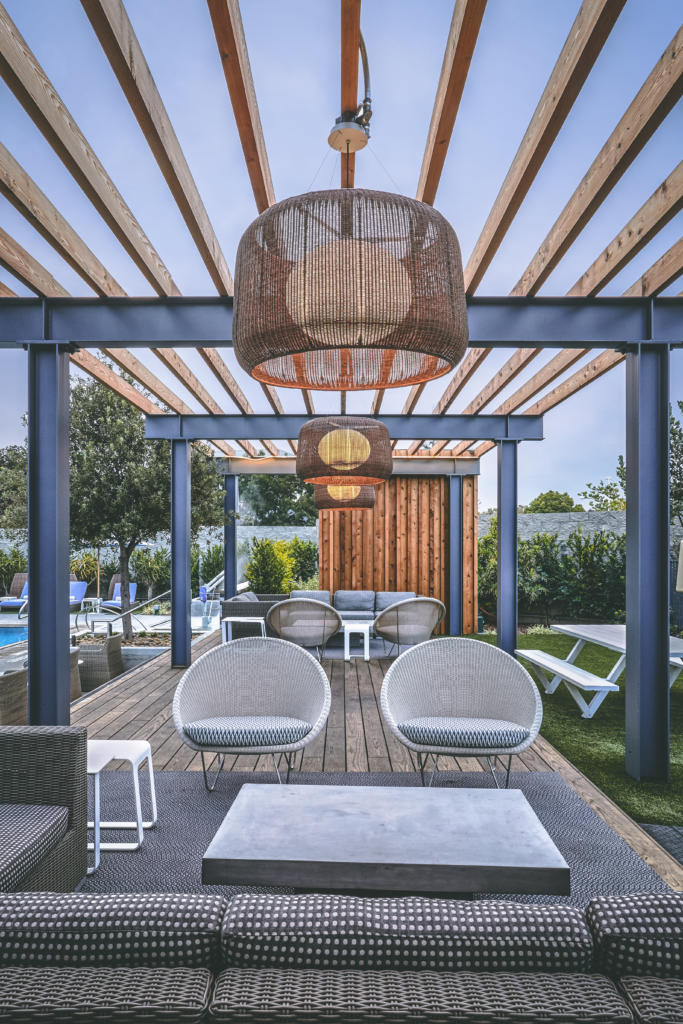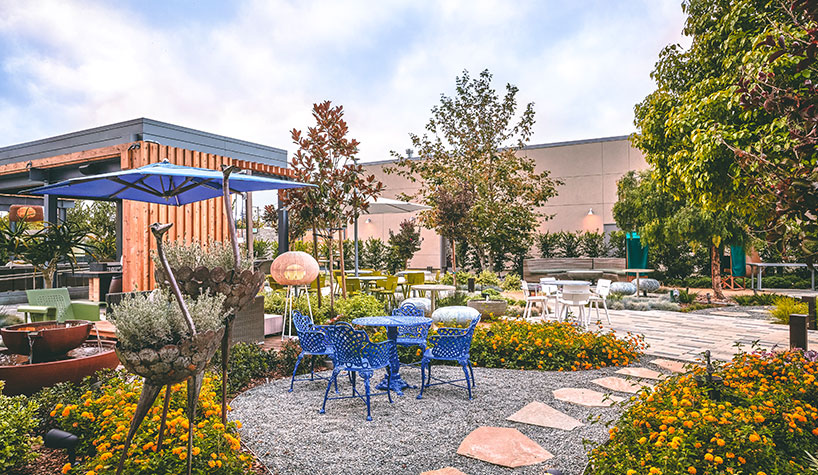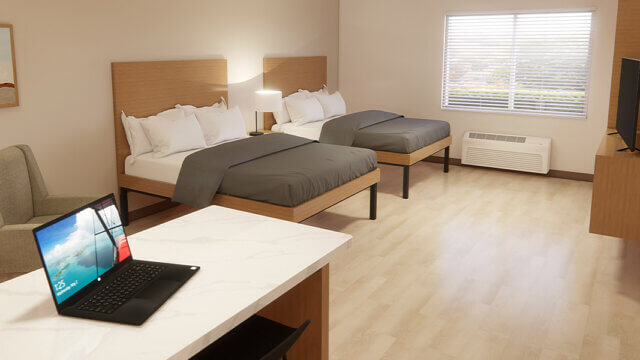NEWPORT BEACH, CA—Hotel Nia, an Autograph Collection Hotel, offers an 11-story glass tower that shines over a courtyard and series of indoor and outdoor spaces. The hotel and its restaurant are centerpieces of Silicon Valley’s landmark Menlo Park Gateway project, which includes three office buildings and accompanying parking structures. Lifescapes International turned it into an oasis.
In a conversation with Hotel Business, Lifescapes International’s VP of Design & Horticulture Roger Voettiner and Al Amador, senior principal and landscape architect, share how the hotel project came to life.
What were some of the client’s goals for this project?
Voettiner: The owners of Hotel Nia were looking for a design that would provide respite for business travelers throughout the Silicon Valley. They wanted to create an environment that would combine nature with the tech-centric dynamic of this region. This why is the 11-story hotel combines natural elements such as a stone and natural wood juxtaposed against a cool, gray steel and glass tower.
We used plant materials that captured the Northern California feel, and were adaptable to the region’s climate; Los Alto Sequoias, Holly Oaks and oversized mature Sycamores are all around the property and create beautiful garden canopies. The dramatic entry drive supports the local feel with large massings of flowering shrubs and sequoias and rich-colored cobblestone walkways. Unique accents offer guests a preview of what is inside.

What feeling did the team at Hotel Nia want to evoke in the design of the indoor/outdoor spaces, and how did you accomplish that desire?
Amador: The goal of the design was certainly to create a warm, inviting and calming environment infused with naturalistic features and a lot of natural light. That said, the owners also wanted to create an environment that would create a series of gathering spaces where guests could engage, socialize and connect.
We did this by creating a series of “mini-destinations.” Throughout the overall design of the hotel, there are a variety of small, intimate areas defined through the landscaping that blur the lines between indoor and outdoor spaces, delivering that warm and inviting feel guests crave.
We tried to allow numerous spaces where the planting is fun, vibrant and eclectic. Finding planting material with unique colors, shapes and sizes adds a bit of whimsy throughout the main courtyard.
There are many spaces your team touched in terms of the design; how did you make it all seamless and cohesive?
Voettiner: Blurring the lines between spaces is one way that we truly create environments that seamlessly flow from one space to another. Large trees and strategically placed flowers and shrubs can eloquently separate spaces without creating true barriers.
For example, we created a central courtyard that strategically connects to the pool, event zone, and bar area. The unique areas are connected by meandering paths featuring distinctive hardscape pavers and decomposed granite, and are surrounded by large sycamore trees, elms and magnolias.
Please share some notable elements?
Amador: The pool area is definitely one of the notable elements of the hotel, along with the central courtyard. We used a lot of different tones and textures to define the areas and give them a modern feel.
The activated pool area is lined with a tapestry of colorful shrubs, flowering accent trees and large oak trees for shade. It features an oversized spa and waterfall feature. All of these items combined create an atmosphere that is perfect for groups to congregate, or for outdoor pool events.
The central courtyard is unique because it is multifunctional. It can serve as an event space, which provides for ancillary revenue for the hotel, or an area for open air lounging.
What was the story you wanted to tell through the design?
Voettiner: The story that we wanted to convey was a true unity with nature. From anywhere guests are staying in the hotel, they can quickly connect to the calming wooded landscape, and feel transported to somewhere else.
What do you hope guests will take away from the experience of being in these spaces you’ve created?
Amador: Hotel Nia was created as a sanctuary for guests. If there is one thing we would like guests to take away, it is the calming and serene feeling that the landscape provides, which hopefully leaves them feeling relaxed, refreshed and ready to return.


